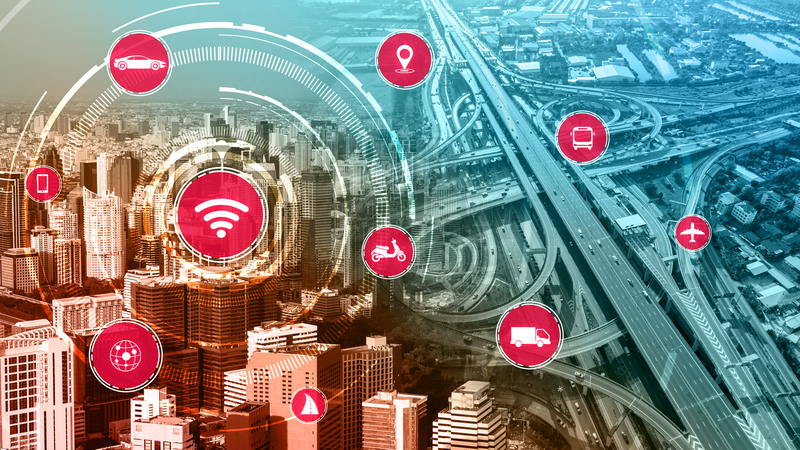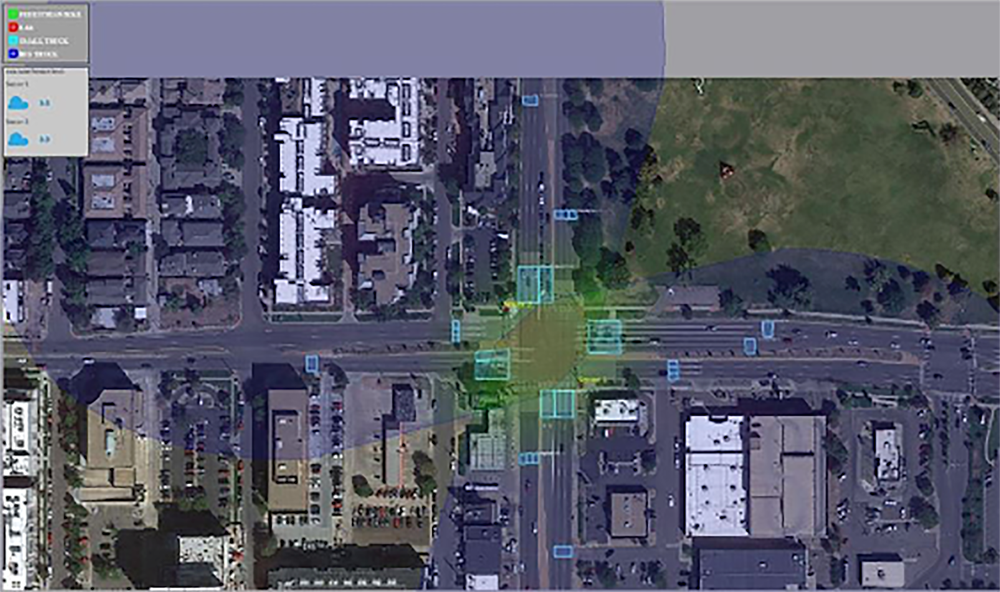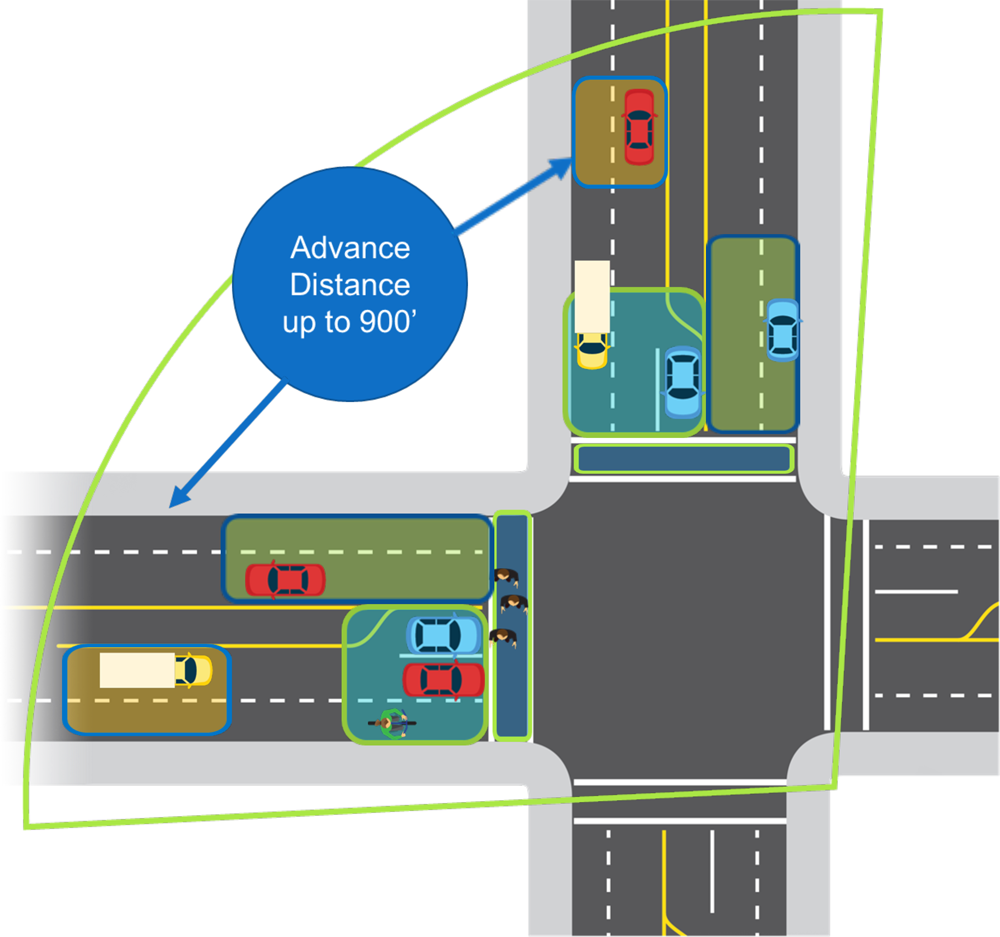
Seamlessly integrating ITS into a future smart city environment requires new levels of sensing and real-time data aggregation that can actively generate and communicate the comprehensive data required for next-generational traffic control. This is particularly critical for connected and automated vehicle (C/AV) applications that require situational awareness of all nearby roadway users. Just as importantly, these new capabilities will also need to support sophisticated analytics to help transportation engineers, planners, and other stakeholders make effective and strategic ITS decisions that enhance traffic flow and safety.

A fundamental input to these future traffic management strategies will come from the enhanced abilities of next-generational roadside sensing technologies. Sensors that provide trajectory data will fuel AI software with the requisite information of where an object came from, what lanes it has travelled through, and where it is going. This level of detection will be essential for cooperative perception systems that will share Vehicle to Everything (V2X) data to vehicles whose sensors cannot yet see these objects further down the corridor, around other vehicles, or around blind corners. Cooperative perception increases the effective detection range and situational awareness of the roadway users through the V2X data exchange between vehicles and the infrastructure. This can have profound benefits for not just in-vehicle systems, but edge computing-based safety and optimisation applications in the future.
This next generation of sensors will also need to support and closely integrate with the communication requirements and data needs of advanced traffic management systems (ATMS) and cloud software solutions that are beginning to automate roadway management and signal optimisation.
The promise of smart cities
The promise of 'smart cities' is expected to address a multitude of urban quality-of-life challenges, chief among them being mobility, or the more efficient, safer, equitable, and sustainable transportation. The Covid-19 pandemic brought to light the need for investments to counter mounting resource constraints and continued urban growth. What the pandemic highlighted was that it is more crucial than ever to make cities more intelligent, efficient, and sustainable.
Smart cities have been projected to provide US$20 trillion in economic benefits by 2026. Support for this is coming through funding being made available for smart city-based projects, including green (programs that reduce fuel consumption and vehicle emissions, for example), transit, and CAV initiatives, all of which help ensure a shared reusability and return on investment for these infrastructure devices. Moving forward, the most important investment will be in the information-based technologies and solutions that sense, aggregate, transmit, and share traffic data. Data is becoming increasingly vital.
Sensors are the key
In order to deliver on its mobility promise, a smart city’s transportation network must be composed of intelligent and accurate roadway sensors that collect and transmit traffic data using a multitude of communication means, including PC5 as well as to cellular and cloud applications that receive, analyse and manage data in real time and near-real time. Careful pairing of sensor devices with a city’s physical infrastructure and community services can cut costs and improve sustainability. With optimised traffic management through the actionable traffic data made available by detection sensors, communities can increase safety, decrease traffic congestion - and even improve air quality.
Today’s ITS and traffic management systems rely upon continuous and accurate vehicle and pedestrian positioning and intended navigation. This data allows efficient signal timing and traffic management performance, even in GPS-blocked environments. Trajectory data sourced and referenced from fixed, known locations will become mission-critical for automated vehicles, transit, and all smart city applications that need a second source of positional data to their GPS systems.

As the use of V2X communications becomes more ubiquitous and connected vehicle applications are being deployed in consumer vehicles, the ITS industry is experiencing a greater need for sensor solutions that can provide advanced position, navigation, object trajectory, and timing solutions via edge computing-based applications that will generate cooperative perception datasets. These datasets are currently under development within the SAE working groups.
The case for radar sensors: trajectory-based detection
Most radar-based detection sensors either use Frequency Modulated Continuous Wave (FMCW) or a forward-fire radar configuration to reliably and accurately detect and classify moving or stationary objects, including cars, trains, trucks and cargo in extreme weather conditions, including rain, fog, and high winds (debris). Because radar uses radio waves instead of light to detect objects, it works well in rain, fog, snow, and smoke. This stands in contrast to other technologies such as video sensors, which are generally susceptible to the same challenges as the human eye. These image-based sensors have to have a clear line of sight to estimate how far away an object is based on the size of the object compared to the sensor’s field of view and other environmental and positioning factors.
Even applying multiple sensors to cover a single approach can be challenging. Resolution becomes a significant issue, as other sensor technologies can struggle to discern multiple moving and stationary objects. Focusing the sensor to a smaller area can help, but it reduces the field of view, leading to a challenging compromise whereby multiple sensors are required to cover a single detection area or zone.
For example, regions that experience heavy snowfall, rain and/or dust storms often have roadways and intersections that prove to be difficult environments for sensors to accurately detect vehicles while radar sensors can reliably detect the presence of vehicles even in these harsh weather conditions. This means radar sensors are well-suited to provide accurate vehicle detection for intersection and roadway environments.
Forward-fire FMCW MIMO radar
In the smart city future, a higher resolution radar sensor will be required that can also be used to simultaneously track more than 500 objects and detect the trajectory of those objects even in the same aforementioned extreme weather conditions. It will need to leverage both forward-fire and FMCW radar technology in a single sensor to make continuous trajectory measurements, including relative speed: so it is simultaneously providing a range measurement, which is vitally important for estimated time of arrival. Moreover, radar sensors will need to detect a wider field of view to tell how quickly multiple objects are moving toward or away from it in multiple directions and accurately indicate range measurements on objects that are as much as 900 feet away.
Forward-fire FMCW Multiple-Input/Multiple-Output (MIMO) radar technology will need to be leveraged for next-generation detection sensors. A forward-fire FMCW MIMO arrangement of phased array antennas provide higher resolution with fewer antenna array elements, simplifying the imaging process. A radar sensor leveraging FMCW MIMO technologies will be able to provide the higher range and angle resolutions needed for trajectory-based detection.
 The next-generation radar design with MIMO technology will help smart cities achieve the traffic detection accuracy and reliability across a variety of detection objectives, including stop bar, advance, departure, bicycle, and pedestrian detection. These next-generation radar sensor solutions will be ideally suited for a variety of intersections, using a 110-degree field-of-view designed to cover two approaches with a single sensor. This will provide the requisite real-time traffic data needed for future traffic signal optimisation and C/AV transportation management programmes with minimal equipment to deploy and maintain.
The next-generation radar design with MIMO technology will help smart cities achieve the traffic detection accuracy and reliability across a variety of detection objectives, including stop bar, advance, departure, bicycle, and pedestrian detection. These next-generation radar sensor solutions will be ideally suited for a variety of intersections, using a 110-degree field-of-view designed to cover two approaches with a single sensor. This will provide the requisite real-time traffic data needed for future traffic signal optimisation and C/AV transportation management programmes with minimal equipment to deploy and maintain.
Supporting future capabilities
In addition to the dynamic detection requirements for traffic management in a smart city, radar sensor solutions will also need to have the computing power to support future applications such as cooperative perception sharing systems for extending awareness of C/AVs and real-time predictive applications. For C/AVs, most of the existing and under-development technologies rely on local onboard sensors, such as cameras and Lidars, to perceive the environment and interact with other road users. Unfortunately, the capability of these sensor technologies is limited in range and field of view. V2X communication, ITS, and radar sensor solutions with enough computing power will enable new possibilities with shared connectivity.
Radar sensor solutions that are smart city-ready will need to have the processing platform to support an object list application programming interface (API), so that future edge-computing hosted applications can be implemented without having to replace sensor solutions. Presently, this computing power will require PC or server grade computation that meets processing power, memory, storage and networking, requirements of these critical safety systems.
Conclusion
It’s no secret that the future smart city environment will require vast amounts of comprehensive data. However, it’s not just the amount of data, but the quality, resolution, and immediacy of the data that will be required for traffic control and management in a smart city. In order to better manage, control, and optimise traffic in the future, including automated vehicles, a more complete and continuous picture of the road and traffic state must be captured and analysed. Dynamic data such as vehicle classification, speed, counts, and travel time will be fundamental. Moreover, this level and resolution of traffic data will be imperative for C/AV transportation management solutions of the future.
Smart cities will not be able to rely solely on fixed point measurements from older detection technologies. Sensor solutions that can provide trajectory-based detection while supporting edge-computing-based applications of the future will be essential in this new ecosystem. The next-generation radar sensor solutions will help smart cities deliver on the promise of optimising infrastructure, mobility, sustainability, and safety.
Sponsored content produced in association with Econolite











